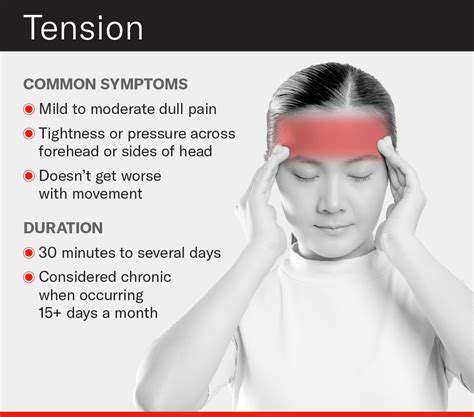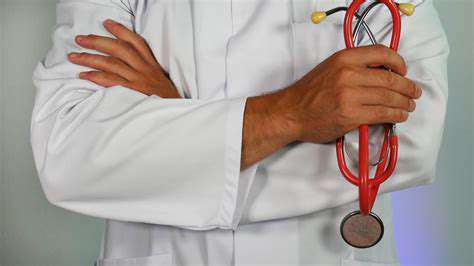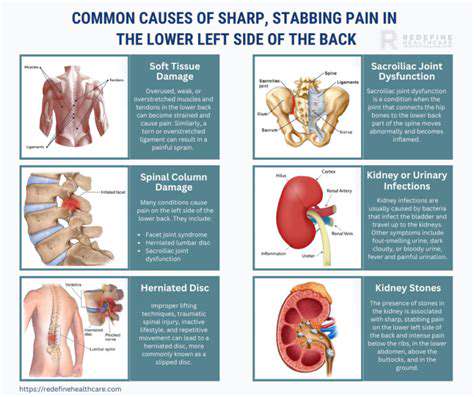Left Front Head Pain: Causes and How to Relieve It
Introduction to Left Front Head Pain
Understanding the Anatomy of Head Pain
Left Front Head Pain often relates to several anatomical structures in the area. The forehead region is primarily made up of skin, muscles, and bone, all of which can contribute to pain sensations. Understanding these could help in identifying the underlying causes.
Commonly, pain in this area might originate from tension in the forehead muscles. Stress and prolonged periods of concentration can lead to muscle tightness, which can be interpreted as pain. Recognizing this connection can be essential for finding relief.
Additionally, neurological factors play a significant role. The trigeminal nerve, responsible for sensation in the face and motor functions, can be a source of pain if it becomes irritated or inflamed. Conditions such as migraines can also provoke discomfort in the frontal region of the head.
Lastly, the vascular structure, including arteries in the forehead, can contribute to pain, especially in the case of headaches linked to vascular issues. Understanding these structures can help in better diagnosing and addressing left front head pain.
Common Causes of Left Front Head Pain
One of the most common causes of left front head pain is Tension Headaches. These are often triggered by stress and poor posture, leading to muscle tension that creates discomfort in the forehead region.
Migraines are another significant cause. They can present with a variety of symptoms, including intense pain often localized to one side. The frontal area may be affected in some individuals, giving rise to complaints of left-sided head pain.
Sinus issues, such as sinusitis, can also manifest as pain in the front of the head. When the sinuses become inflamed or infected, they can cause pressure and discomfort that may radiate to other areas, including the forehead.
Lastly, eye strain or conditions related to vision can precipitate pain in the left frontal region. Spending extended periods in front of screens without breaks can lead to discomfort, reinforcing the importance of regular eye care and proper ergonomics.
Effective Relief Strategies for Left Front Head Pain
To alleviate left front head pain, one can start with simple lifestyle changes. Incorporating regular breaks during work, especially for those who spend long hours at a desk, can help minimize muscle tension and prevent headaches.
Practicing relaxation techniques, such as deep breathing exercises or meditation, can significantly reduce stress and associated tension. Simple stretches for the neck and upper back can also relieve tightness that may contribute to headaches.
Over-the-Counter Pain Relievers like ibuprofen or acetaminophen can provide immediate comfort. However, it’s essential to follow dosage instructions and consult a healthcare professional for chronic pain management.
Finally, seeking treatment for underlying conditions, such as eye strain or sinus issues, can be critical in preventing recurrences of left front head pain. Regular check-ups with healthcare providers ensure that any potential health issues are appropriately addressed.
Common Causes of Left Front Head Pain
1. Tension Headaches
Tension headaches are among the most common types of headaches experienced by individuals. They usually present as a dull, aching sensation across the forehead, including the left front area. Factors such as stress, anxiety, and fatigue often trigger these headaches, making them prevalent in today's fast-paced world.
To manage tension headaches, it may help to implement relaxation techniques. Practices such as meditation, deep breathing exercises, or yoga can significantly reduce stress levels. Integrating regular breaks and self-care routines into your daily schedule can also minimize the occurrence of these headaches.
Over-the-counter pain relief medications, such as ibuprofen or acetaminophen, may provide immediate relief for tension headaches. However, it's important to avoid frequent usage, as this may lead to rebound headaches over time.
2. Migraine Episodes
Migraine headaches can cause intense throbbing pain, often localized to one side of the head, including the left front area. They may last from a few hours to a few days and can be accompanied by other symptoms such as nausea, vomiting, and sensitivity to light and sound.
Identifying triggers is essential in managing migraines. Common triggers include certain foods, hormonal changes, stress, and environmental factors. Keeping a headache diary can help individuals track when migraines occur and what might have contributed to them.
There are various treatment options available for migraines, including prescription medications specifically designed to prevent or alleviate symptoms. Lifestyle modifications, such as maintaining a regular sleep schedule and avoiding known triggers, can also help reduce the frequency and severity of migraine attacks.
3. Sinusitis and Sinus Pressure
Sinusitis, or inflammation of the sinus cavities, can lead to pressure and pain in the forehead area, particularly the left side, if one side is affected more than the other. This condition often arises after a cold or due to allergies and can result in additional symptoms like nasal congestion, facial swelling, and fever.
Managing sinusitis may include treatment with decongestants or saline nasal sprays to help alleviate pressure and promote drainage. In some cases, a doctor may recommend antibiotics if a bacterial infection is suspected.
Home remedies such as using a humidifier, taking warm showers, or applying warm compresses to the face can also soothe symptoms. Staying hydrated and practicing good nasal hygiene are crucial in preventing further sinus infections.
4. Cluster Headaches
Cluster headaches are a rare but severe form of headache that can occur in cycles or clusters, typically affecting one side of the head, including the front left area. These headaches often come on suddenly and are characterized by excruciating pain around the eye and temple, accompanied by symptoms such as watering eyes and a runny nose.
While the exact cause of cluster headaches is still unknown, they are thought to be related to changes in the body's biological clock. Certain lifestyle factors, such as smoking, alcohol consumption, and exposure to strong smells, may trigger episodes.
For management, oxygen therapy and medications such as triptans are often used to alleviate pain. Preventive treatments, including corticosteroids and certain migraine medications, may also be beneficial for individuals suffering from frequent cluster headaches.
5. Other Potential Causes
Besides the more common causes of left front head pain, other potential factors should also be considered. Conditions such as cervical spine issues or temporomandibular joint (TMJ) disorders can contribute to pain experienced in the front left area of the head. These conditions may lead to muscle tension or nerve compression, resulting in persistent discomfort.
Other serious conditions, although less common, include infections, tumors, or vascular issues. It's crucial to be aware of other accompanying symptoms, such as sudden vision changes, speech difficulties, or severe dizziness, which require immediate medical attention.
Consulting a healthcare professional is vital for anyone experiencing recurrent or severe headaches. They may conduct a thorough examination, including imaging tests, to determine the underlying cause and develop an effective treatment plan.
Symptoms Associated with Left Front Head Pain

Common Symptoms of Left Front Head Pain
Individuals experiencing left front head pain often report a range of symptoms that can vary in intensity. These symptoms may include throbbing or sharp pain localized in the frontal area of the head, and they can sometimes radiate to other regions.
In addition to pain, people might experience nausea or sensitivity to light and sound. Recognizing these symptoms early can aid in diagnosing the underlying cause.
Potential Triggers for Left Front Head Pain
Various factors can trigger left front head pain, including stress, lack of sleep, and dehydration. Certain foods and beverages, particularly those that contain caffeine and alcohol, may also contribute to the onset of pain.
Moreover, underlying medical conditions, such as migraines or tension headaches, often play a significant role in creating discomfort. Identifying these triggers can help in managing and preventing future episodes.
When to Seek Medical Attention
While some instances of left front head pain may be mild and temporary, others can signal more serious health issues. If the pain is severe or persistent, it is crucial to consult a healthcare professional for further evaluation.
Additionally, seek immediate medical help if the headache is accompanied by symptoms such as vision changes, confusion, or loss of consciousness. Taking these symptoms seriously can lead to timely treatment and improved outcomes.
Home Remedies to Relieve Left Front Head Pain
There are several home remedies that may help alleviate left front head pain. Resting in a dark, quiet room, applying a cold or warm compress to the forehead, and staying hydrated can provide relief.
Furthermore, relaxation techniques such as deep breathing, meditation, and gentle yoga can be beneficial for reducing overall stress and tension. Implementing these remedies may lead to significant pain alleviation.
Over-the-Counter Medications and Treatment Options
Over-the-counter medications, including ibuprofen or acetaminophen, can be effective in managing left front head pain. It is essential to follow the recommended dosage and consider any potential interactions with other medications.
In cases where symptoms persist, a healthcare provider may recommend stronger prescription medications or other treatment options. Understanding the medications available can empower individuals in their pain management journey.
Diagnosis and When to Seek Medical Help

Understanding the Symptoms
Left front head pain can manifest in various ways. Common symptoms include throbbing or sharp pain, which may be persistent or intermittent. Additionally, some individuals may experience accompanying symptoms like nausea or sensitivity to light.
It's important to take note of when the pain occurs. For instance, does it coincide with certain activities, stress, or dietary changes? Keeping a headache diary can help identify patterns that may be useful in diagnosis.
Other symptoms to monitor include changes in vision or cognitive function. These can indicate whether the headache is part of a larger issue that requires professional evaluation.
Possible Causes of Left Front Head Pain
There are many potential causes of left front head pain ranging from tension headaches to more serious conditions. Tension headaches, often triggered by stress or poor posture, are one of the most common culprits. They are usually characterized by a dull, aching sensation.
Migraines can also cause pain localized to the left side of the head and may be accompanied by symptoms such as aura or increased sensitivity. Understanding the type of headache can lead to more effective treatment options.
Additionally, sinus issues or infections may contribute to pain in the frontal region of the head. These can often be identified by other symptoms, such as nasal congestion or facial pressure.
Self-Management Techniques
There are several self-management strategies that individuals can employ to alleviate left front head pain. Relaxation techniques such as meditation or deep breathing exercises can help reduce stress levels that may contribute to headaches.
Physical activity and yoga are also effective for many. Regular exercise helps to decrease tension, improve mood, and enhance overall physical health, which can minimize the frequency of headaches.
Alternative treatments like acupuncture or herbal remedies may also provide relief for some. It's advisable to consult with a healthcare provider before trying new supplements or therapies.
When to Consult a Healthcare Professional
While many headaches can be treated with home remedies, there are times when medical attention is necessary. If you experience severe pain that disrupts your daily life or lasts for a prolonged period, seeking professional help is crucial.
Additionally, headaches that are accompanied by neurological symptoms, such as confusion, speech difficulties, or visual disturbances, warrant immediate medical evaluation.
Chronic headaches that change in frequency or intensity over time also need to be discussed with a healthcare professional. It’s important to address any underlying health issues that may be causing persistent discomfort.
Treatment Options for Left Front Head Pain

Over-the-Counter Pain Relievers
When experiencing left front head pain, many individuals turn to over-the-counter (OTC) pain relievers as a first line of defense. These medications, such as ibuprofen or acetaminophen, can effectively reduce pain and inflammation. It's essential to follow the recommended dosages to avoid potential side effects.
OTC pain relievers are readily available and can provide quick relief for mild to moderate pain. However, if the pain persists, it might indicate a more serious underlying issue.
Consulting with a healthcare professional is advisable if the pain does not improve with OTC medications. They can advise on the appropriate course of action, including prescribing stronger medications if necessary.
Moreover, individuals should be aware of any allergies or contraindications related to these medications before use.
Alternative Therapies and Lifestyle Changes
Exploring alternative therapies can be a beneficial approach for managing left front head pain. Practices such as acupuncture, massage therapy, and yoga have been shown to provide significant relief for some individuals. These holistic approaches can help alleviate pain by targeting muscle tension and improving circulation.
Incorporating lifestyle changes, such as regular exercise and a balanced diet, can also be beneficial. Staying hydrated and managing stress levels are key factors in reducing the frequency and intensity of headaches.
Mindfulness techniques, including meditation and deep-breathing exercises, can help individuals manage pain effectively. Developing a routine that prioritizes relaxation can lead to long-term benefits for overall well-being.
Additionally, ensuring adequate sleep and maintaining a healthy work-life balance are crucial components of headache prevention.



